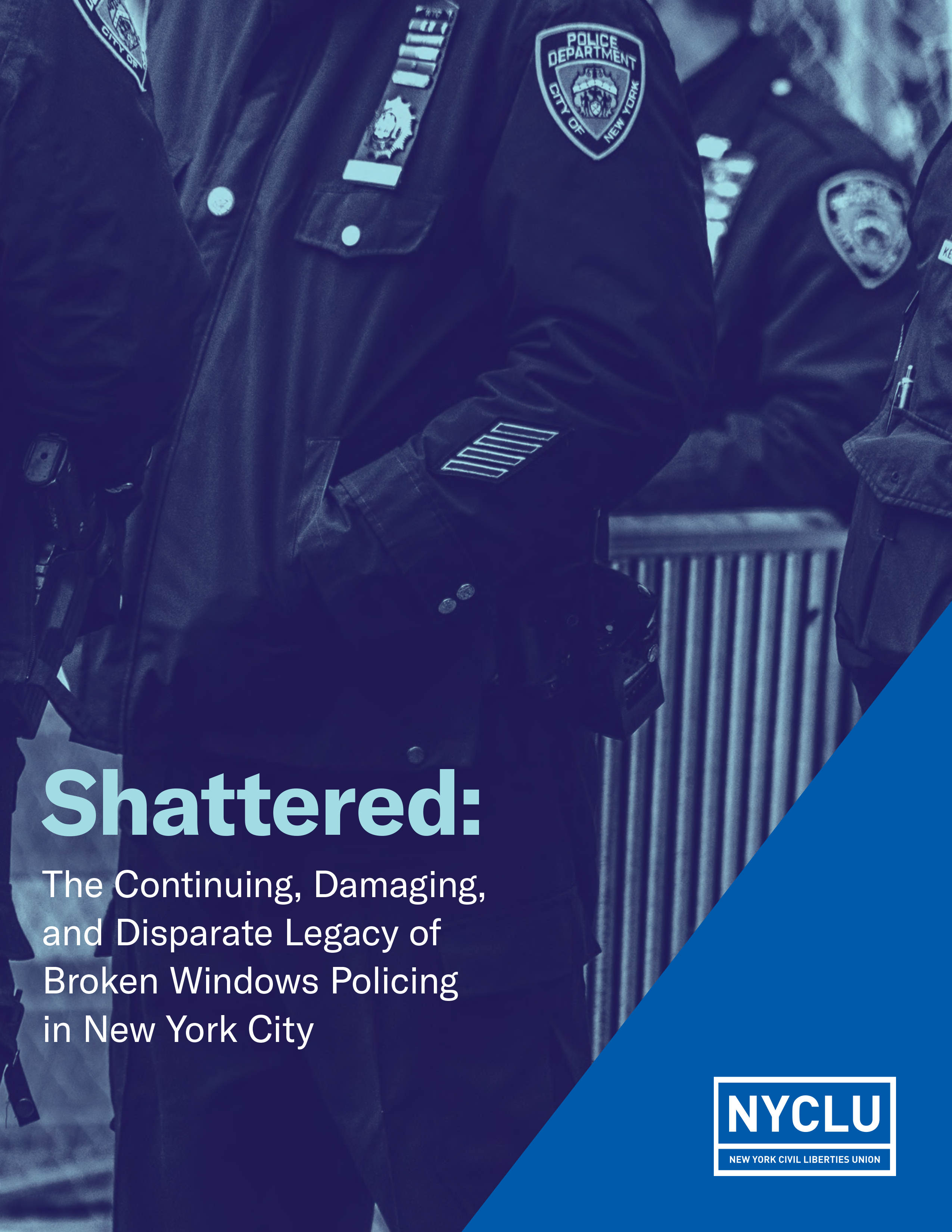When it comes to experiences with policing, the tale of two cities lives on
NEW YORK – The New York Civil Liberties Union today released the results of a groundbreaking survey of nearly 1,500 New Yorkers, revealing vast disparities in the daily impact police have on people’s lives depending on the racial and economic make-up of the community where they live. The survey asked New Yorkers in lightly policed and heavily policed neighborhoods about their experiences with police. It found that, despite litigation and advocacy efforts to curb abusive stop-and-frisk practices, New Yorkers of color continue to feel harassed, surveilled and disrespected by police.
“Five years into Mayor de Blasio’s tenure, the tale of two cities lives on in the vastly different ways that New Yorkers experience policing,” said Donna Lieberman, NYCLU executive director. “The NYPD maintains that flooding neighborhoods with police makes people feel safer, but our survey reveals the opposite is more often true. The majority of New Yorkers want good schools and well-paying jobs to improve their neighborhoods, not broken windows policing.”
In order to get a clearer idea of how New Yorkers experience policing following the decline of stop-and-frisk, the NYCLU conducted an extensive survey of nearly 1,500 New Yorkers in neighborhoods with historically high and low numbers of official stop-and-frisk reports.
Key findings from the survey included:
- More than two-thirds (67 percent) of respondents in heavily policed communities feared having a friend or family member killed by police (15 percent of respondents in lightly policed communities felt the same way).
- 85 percent of survey respondents in heavily policed communities said they actively changed things about their behavior, relationships, use of space, or schedule to avoid police surveillance.
- More than a third (41 percent) of respondents in heavily policed communities reported enduring extreme physical force from police, compared to just four percent in lightly policed communities.
- Almost half (48 percent) of respondents in heavily policed communities said the police wrongly accused them of committing a crime.
The survey was designed in consultation with people in impacted communities, academic experts, police officers, and community activists. It was conducted by the NYCLU and researchers from the Public Science Project at the City University of New York between October 2016 and May 2017. The heavily policed communities surveyed were Brownsville, East Harlem, and the South Bronx, while the lightly policed neighborhoods surveyed were Williamsburg, Park Slope, the Upper East and Upper West Sides, Greenwich Village, SoHo, the East Village, Riverdale and Spuyten Duyvil. While the crime rates in both the heavily and lightly policed communities are comparable, there was a stark difference in the amount of police abuse, harassment, surveillance and criminalization reported in the two communities.
For decades, stop-and-frisk practices were the most visible form of broken windows policing. At its height, nearly 90 percent of the hundreds of thousands of people stopped and frisked by police every year were black and brown New Yorkers. Advocacy and litigation by the NYCLU and many others brought about dramatic reduction to stop-and-frisk practices.
Yet, people of color in New York City, particularly in and around public housing, continue to experience disproportionate police contact, abuse, harassment, and discrimination. These communities endure many more police encounters and suffer the consequences of those encounters much more frequently than people who live in whiter neighborhoods.
“As long as police aggressively target minor offenses in only certain neighborhoods, the City’s investment in “neighborhood policing” will be window dressing,” said NYCLU advocacy director Johanna Miller. “True public safety requires a community empowered with the resources to thrive, not a neighborhood burdened by constant police control and suspicion.”
When the NYCLU asked people what they wanted more of in their neighborhoods, New Yorkers in both heavily and lightly policed areas prioritized things like “good schools” and “well-paying jobs.” Neither community prioritized needing more police in their neighborhoods. In fact, 44 percent of those living in heavily policed communities and nearly a quarter of those living in lightly policed communities actually wanted fewer police in their neighborhood.
The report concludes with recommendations for how the city and the NYPD can take steps to end the inequities in the way different communities are policed, including ending broken windows policing, tackling harassment and abuse by officers, ending secrecy around surveillance technology, and ensuring accountability and transparency in the police disciplinary process. The report comes ahead of the Saturday’s opening of the Museum of Broken Windows, a temporary exhibition featuring art and events reflecting on the impact of broken windows policing.
